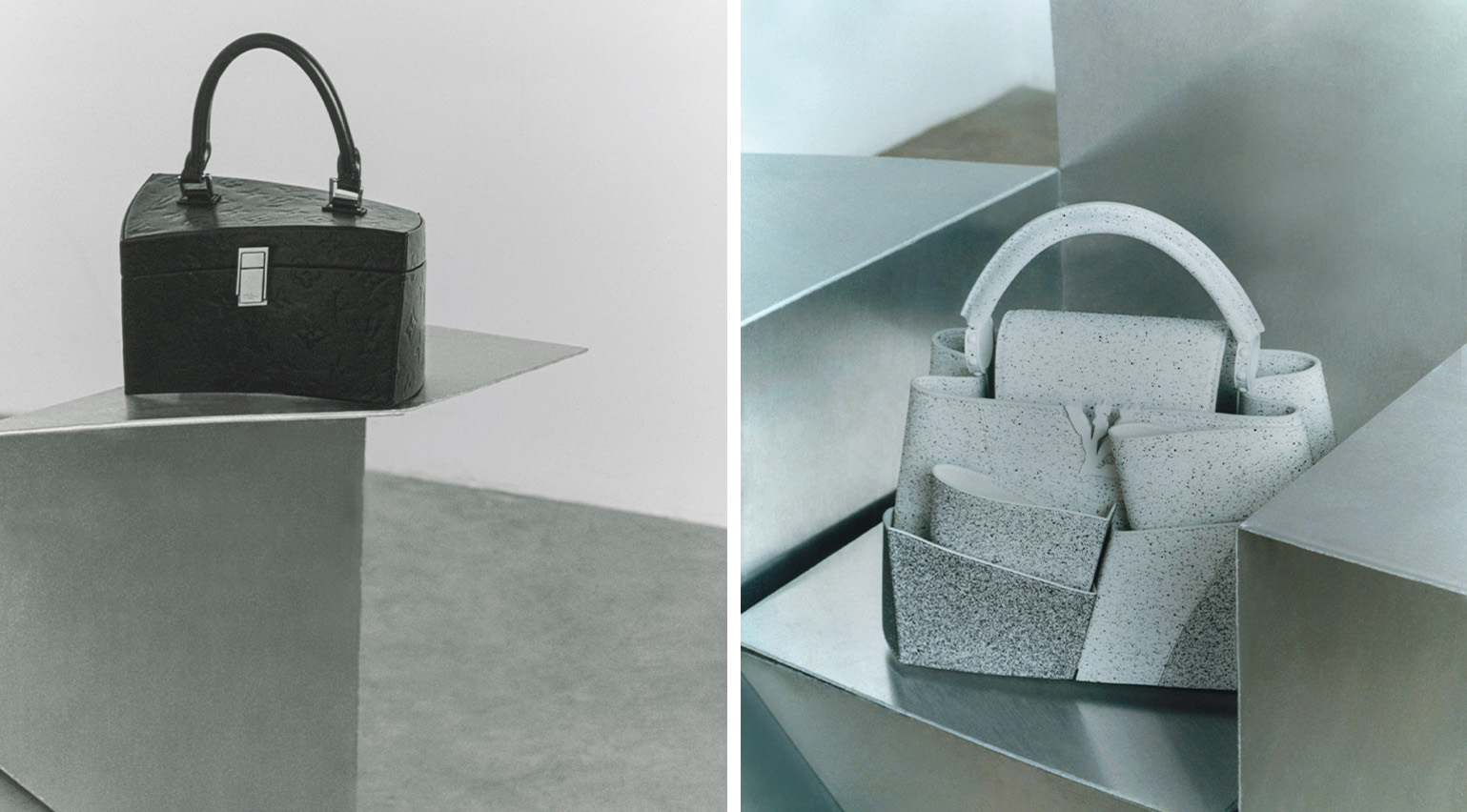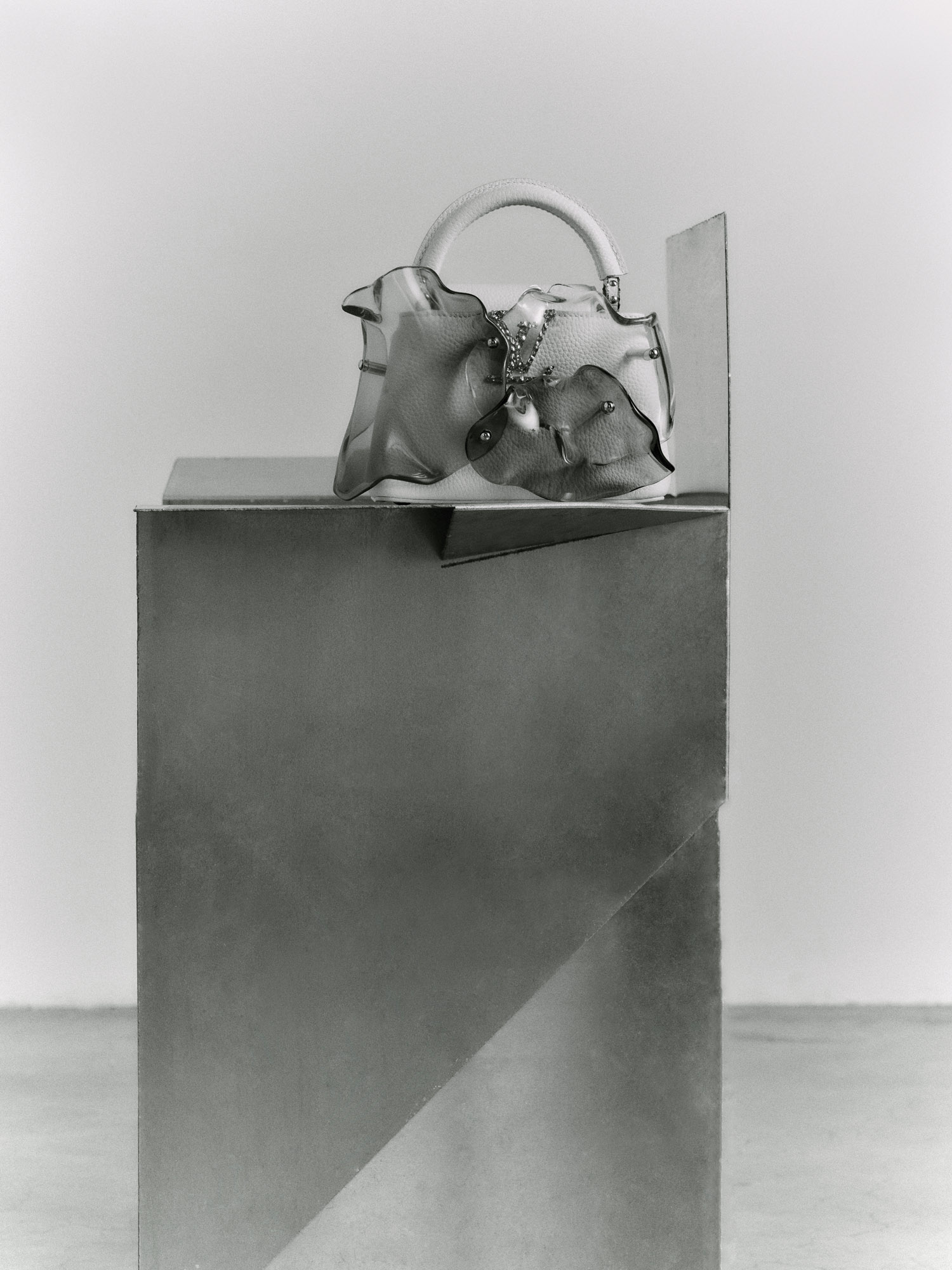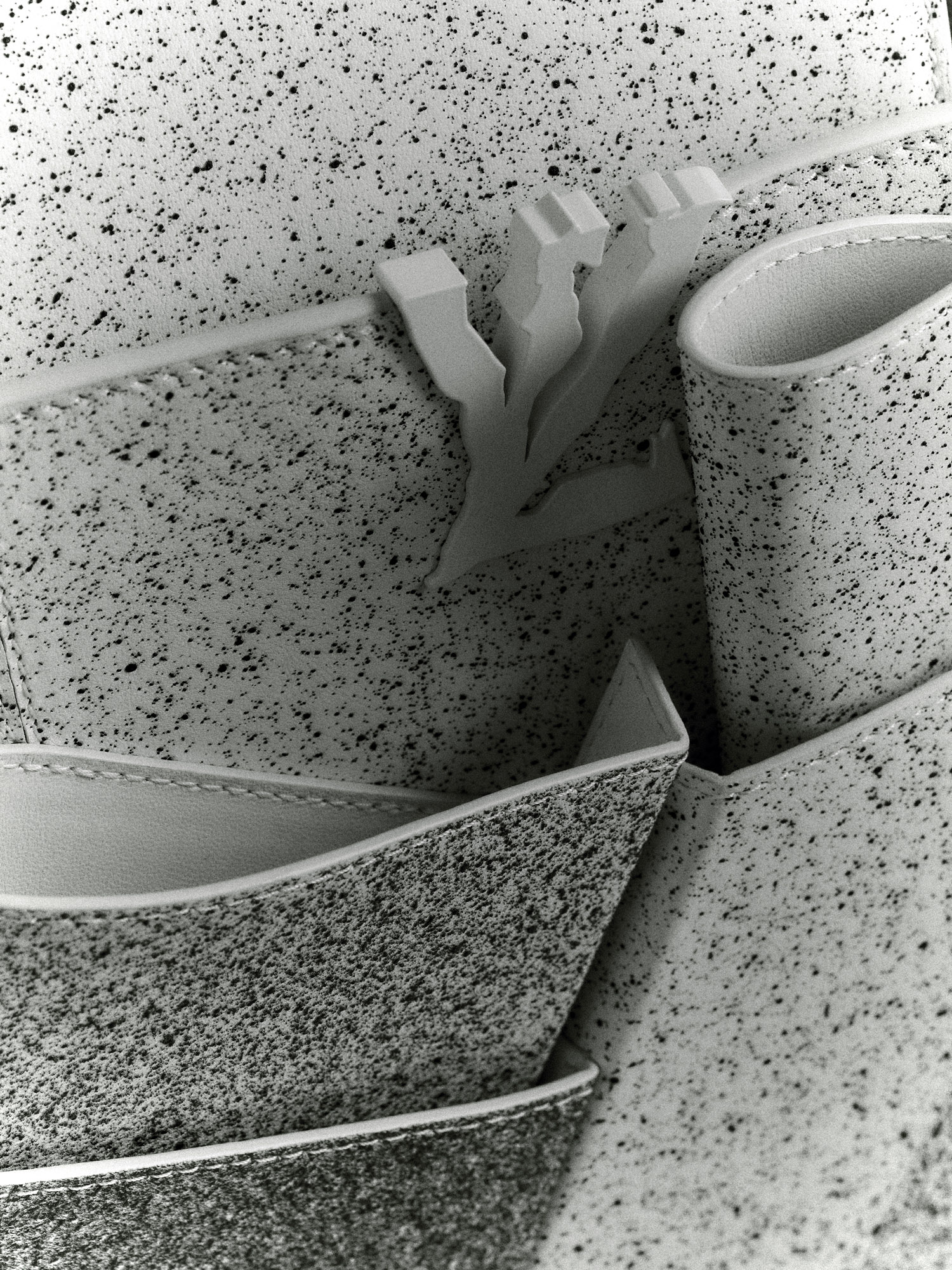
When Bernard Arnault, the chairman of French luxury goods conglomerate LVMH, was searching for an architect to create a building to house his vast private art collection, he remembered being struck by the fluid forms of Frank Gehry’s 1997 Guggenheim Museum in Bilbao, Spain. In 2001, the pair met and, by 2006, the plans for Fondation Louis Vuitton – named for the Parisian fashion house at the centre of the LVMH empire – were announced, marking the first collaboration between Arnault and the Canadian-American architect.
Eight years later, in 2014, the Fondation Louis Vuitton opened its doors in the Jardin d’Acclimatation, a historic amusement park in Paris’ Bois de Boulogne. A spectacle in scale and form, the 126,000 sq m gallery was described by LVMH as a ‘transparent cloud’, its shimmering, overlapping ‘sails’ appearing as if preserved in perpetual movement.
Frank Gehry’s architecture-inspired handbags for Louis Vuitton

A decade on, Gehry remembers walking through the Jardin d’Acclimatation with Arnault with ‘tears running down my face’. ‘The site was so filled with history, and the project was so modern,’ he says. ‘I felt incredibly honoured that Bernard Arnault would trust me with such a rare project.’
He is speaking on the occasion of a new collaboration with Louis Vuitton, which sees the architect design a limited-edition collection of handbags for the house. Smaller in scale but no less architectural in scope, the 11-piece collection draws inspiration from some of Gehry’s most notable designs while building on the architect’s initial handbag for the maison’s 2014 ‘Celebrating Monogram’ project. Called ‘Twisted Box’, its hard shell twisted in the architect’s unorthodox style, the bag is now available in embossed leather rather than the original canvas.
‘You have to work within the materials’ limits, but Louis Vuitton was able to produce things that were beyond my wildest dreams’
Frank Gehry
The new collection also features more architectural styles, like the angular ‘Capucines MM Concrete Pockets’, which recalls the concrete exteriors of Gehry’s most memorable buildings, or a shell-like iridescent Plexiglas model that evokes the façade of Gehry’s distinctive Museum of Pop Culture in Seattle. Other creations feature fish and crocodile motifs in an echo of interior fixtures Gehry has created for various buildings (the crocodile appears in London’s Sexy Fish restaurant; the fish nods to lamps at Fondation Louis Vuitton), or reference the glass toppers Gehry created for Louis Vuitton’s Les Extraits perfumes.
‘It’s not so much about making sure that the original vision is translated,’ says Gehry. ‘Rather, it’s about working with the team to create the object of desire together. The craftspeople working on the bags have constraints in what the leather or materials can do. You have to work with those limits and pick and choose where to push the boundaries… [but] they were able to produce things that were beyond my wildest dreams.’

The project also saw the architect work with his daughter-in-law, Joyce Shin Gehry, who is also a colleague at Gehry Partners. ‘Joyce is very talented and has a great eye,’ he says. ‘She started making all sorts of bags – playing with different themes and shapes. Working inside the “Capucines” shape [one of Louis Vuitton’s most enduring handbag styles] meant that we started exploring texture, colour and graphics more than we might have if we were starting from scratch.’
The idea, says Gehry, was that each handbag had a unique story to tell. ‘What Louis Vuitton brings to the table is a deep respect for the artistic process,’ he says. ‘We try things, we see what works and what doesn’t.’ As for the exactitudes of each bag’s construction, unlike the painstaking process of creating the Fondation Louis Vuitton – which involved the placing of 3,600 panels of curved glass – Gehry largely left it to the expertise of the Louis Vuitton atelier. ‘They made everything look effortless to me.’
A version of this article appears in the April 2024 issue of Wallpaper* available in print, on the Wallpaper* app on Apple iOS, and to subscribers of Apple News +. Subscribe to Wallpaper* today.
Set design: Thomas Conant. Photography assistant: Matt Bramston.







